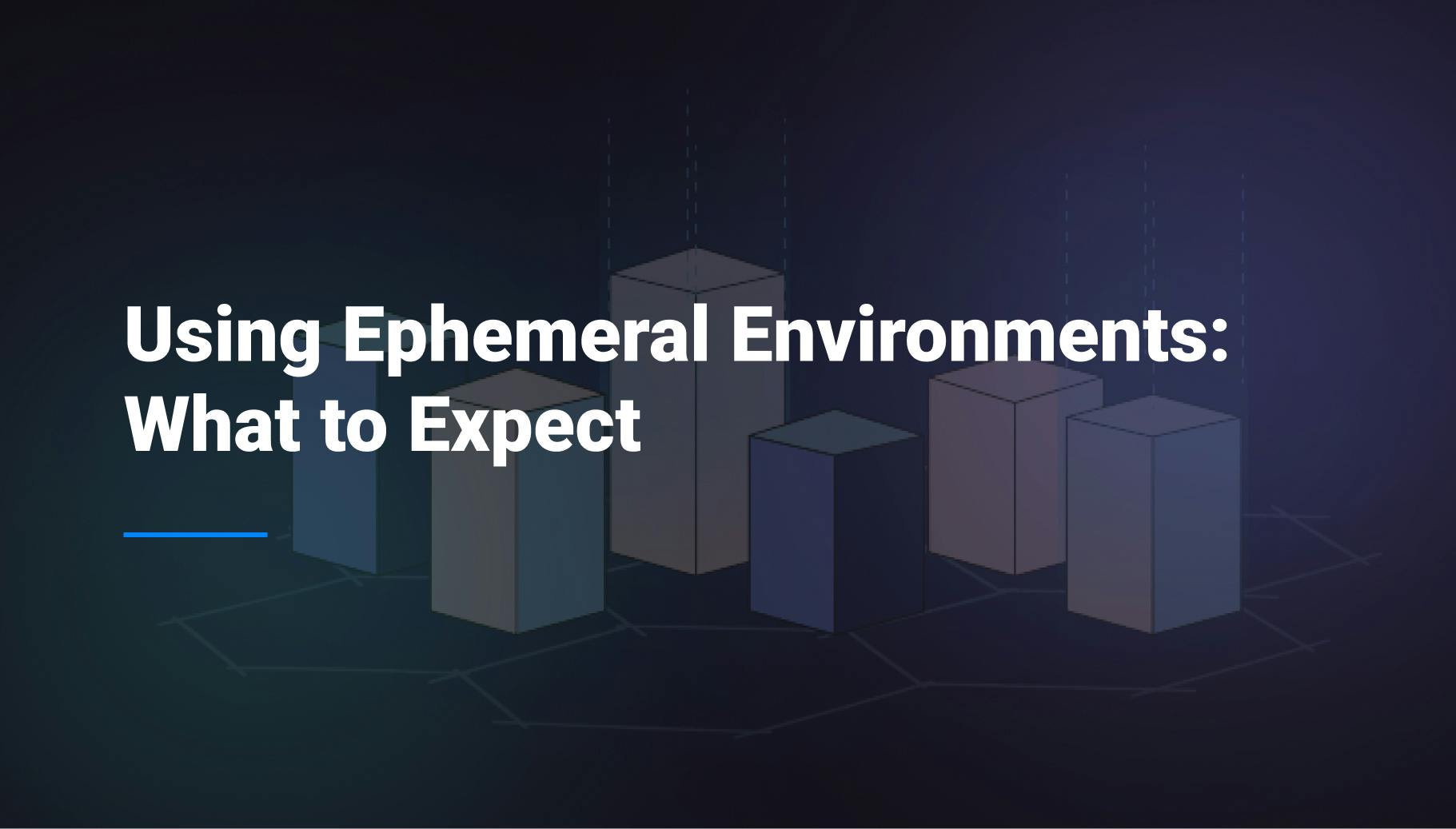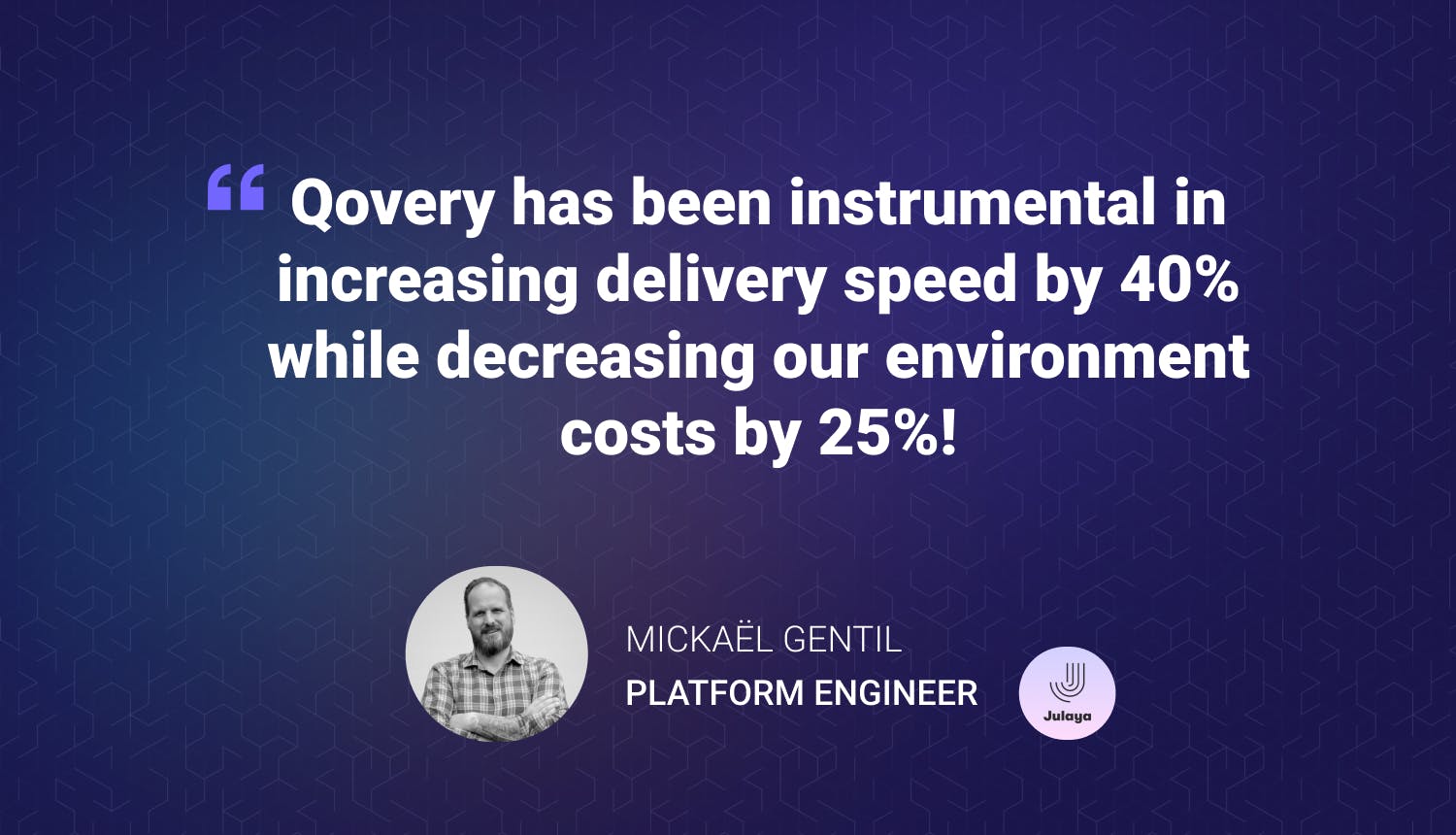Using Ephemeral Environments: What to Expect
The emergence of Ephemeral Environments poses a compelling question: What can organizations expect from adopting this transformative approach? What are the hurdles they may face along the way? And what results can they anticipate? These are the questions I will address in this article as we explore why Ephemeral Environments are garnering attention and what makes them so pivotal for engineering teams today. Let's go!

Morgan Perry
April 10, 2024 · 6 min read
#What Are Ephemeral Environments?
Ephemeral Environments, at their core, are transient and disposable environments that closely mirror production settings. Unlike traditional static environments, which remain fixed and prone to stagnation, Ephemeral Environments are dynamically created and torn down as needed. This dynamic provisioning process ensures a pristine testing environment for each iteration, free from the contamination of previous tests.
From a technical standpoint, Ephemeral Environments leverage infrastructure-as-code (IaC) principles to automate environment setup and teardown. Tools like Kubernetes, Docker, and cloud-native orchestration platforms play a pivotal role in orchestrating Ephemeral Environments, enabling seamless scaling and management.
I love saying that Ephemeral Environments embrace a "pets vs. cattle" mentality, treating servers and infrastructure as disposable commodities rather than cherished assets. This paradigm shift allows for greater flexibility and scalability, as resources can be provisioned and deprovisioned on-demand to meet the evolving needs of development and testing.
By decoupling infrastructure from application logic and embracing automation at every stage of the deployment pipeline, Ephemeral Environments empower development teams to iterate rapidly and experiment with confidence.
#What Drives Adoption for Ephemeral Environments?
Ephemeral Environments herald a transformative shift in how organizations approach deployment and testing. Unlike traditional static environments, which require extensive manual setup and maintenance, Ephemeral Environments embrace automation and dynamism at their core. This fundamental change enables engineering teams to break free from the shackles of outdated processes and embrace a more agile and responsive approach to software development.
From a technical standpoint, Ephemeral Environments promote a "shift-left" mentality, encouraging teams to integrate testing and validation processes earlier in the development lifecycle. This proactive approach not only reduces the likelihood of defects but also accelerates time-to-market by catching issues sooner rather than later. By encapsulating applications and their dependencies within lightweight containers, Ephemeral Environments ensure consistency and reproducibility across different stages of the deployment pipeline.
By automating infrastructure provisioning, embracing containerization, and fostering a culture of continuous testing and deployment, organizations can unlock new levels of innovation and responsiveness in today's fast-paced.
#What Challenges Do Ephemeral Environments Address?
#Technical Challenges
- Environment Consistency and Reproducibility: Traditional deployment environments often suffer from inconsistencies due to manual setup and configuration. Ephemeral environments solve this challenge by leveraging infrastructure-as-code (IaC) principles to automate environment provisioning.
- Environment Drift Mitigation: Environment drift occurs when changes made to one environment are not properly propagated to others, leading to discrepancies in testing results. Ephemeral environments mitigate this risk by dynamically creating isolated environments on demand. Each testing iteration begins with a pristine environment, eliminating the possibility of drift and ensuring consistent test results.
- Scalability and Resource Optimization: Managing resources efficiently in a dynamic deployment environment is a significant challenge. Ephemeral environments leverage containerization and orchestration technologies like Kubernetes to optimize resource utilization and scale applications dynamically. This ensures that resources are allocated efficiently, reducing costs and improving overall system performance.
- Rapid Iteration and Experimentation: Traditional deployment environments often hinder rapid iteration and experimentation due to lengthy setup times and manual processes. Ephemeral environments enable developers to spin up isolated testing environments quickly and tear them down just as fast. This agility fosters a culture of experimentation and innovation, empowering teams to iterate rapidly and deliver high-quality software with confidence.
#Organizational Challenges
1. Accelerated Time-to-Market: By providing developers with self-service access to ephemeral environments, organizations can accelerate the time-to-market for new features and updates. Developers no longer need to wait for environment provisioning or rely on shared resources, allowing them to iterate faster and deliver value to customers more efficiently.
2. Improved Collaboration and Communication: Ephemeral environments promote collaboration and communication across development and operations teams. By automating environment setup and teardown, ephemeral environments reduce friction in the deployment process and encourage cross-functional collaboration. This fosters a culture of shared responsibility and accountability, leading to smoother deployments and faster resolution of issues.
3. Enhanced Flexibility and Agility: Ephemeral environments provide organizations with the flexibility and agility to adapt quickly to changing business requirements. By decoupling infrastructure from application logic and embracing automation, organizations can respond rapidly to market demands and scale their operations efficiently. This agility enables organizations to stay competitive in today's fast-paced digital landscape.
#Security & Compliance Challenges
1. Data Protection and Access Control: In ephemeral environments, data protection becomes paramount, especially with the transient nature of resources. Implementing robust encryption mechanisms and access controls ensures that sensitive data is safeguarded against unauthorized access. Role-based access control (RBAC) mechanisms can be employed to enforce least privilege access, limiting exposure to sensitive data.
2. Compliance Requirements Adherence: Ephemeral environments must adhere to various compliance standards, such as GDPR, HIPAA, and PCI DSS, depending on the industry and geographic location. Organizations need to ensure that ephemeral environments meet these regulatory requirements by implementing necessary controls and conducting regular audits to assess compliance.
3. Vulnerability Management: With ephemeral environments being spun up and torn down dynamically, managing vulnerabilities becomes a challenge. Organizations must implement robust vulnerability management practices, including continuous scanning and patching of container images and underlying infrastructure. Automated vulnerability assessment tools can help identify and remediate vulnerabilities in a timely manner.
4. Auditability and Logging: Maintaining audit trails and comprehensive logging becomes essential in ephemeral environments to track changes and detect unauthorized access or activities. Organizations should implement logging solutions that capture relevant events and activities within ephemeral environments, enabling effective incident response and forensic analysis when security incidents occur.
#Expected Results and Outcomes of Ephemeral Environments
Ephemeral environments offer a myriad of precise benefits for engineering teams and organizations, revolutionizing the way software is developed, tested, and deployed. These benefits include accelerated time-to-market, enhanced testing efficiency, reduced infrastructure costs, improved developer productivity, increased reliability, scalability, and compliance.
#Study Findings
To quantify the impact of ephemeral environments on software development processes, we conducted a comprehensive study with our customers who have implemented solutions like Qovery. The results were compelling:
- More speed in delivery time: Our clients experienced a remarkable improvement of (+35%) in delivery time by leveraging ephemeral environments. With the ability to spin up isolated testing environments on-demand, developers could iterate rapidly and deliver new features to production faster than ever before.
- Fewer bugs deployed in production: The implementation of ephemeral environments led to a significant decrease (-30%) in the number of bugs deployed to production. By catching issues earlier in the development lifecycle and ensuring consistent testing environments, our clients were able to deliver higher-quality software with fewer defects.
- Time Savings: Our clients reported a time savings of (~40%) by adopting ephemeral environments. Automation of environment setup and teardown, along with streamlined testing processes, freed up valuable time for developers to focus on building and delivering features, rather than managing infrastructure.
- Cost Savings on Environments: Implementing ephemeral environments resulted in cost savings (~25%) on infrastructure costs. By optimizing resource utilization and eliminating the need for persistent staging environments, our clients were able to reduce infrastructure overhead and allocate resources more efficiently.
- Developer Productivity: Ephemeral environments boosted developer productivity by (~35%) according to our study findings. With self-service access to testing environments and automated deployment processes, developers could work more efficiently and collaborate seamlessly across teams.

Qovery has been instrumental in boosting developer productivity by increasing delivery speed by 40% while decreasing our environment cost by 25%! —
These findings represent a game-changer for engineering teams and organizations facing challenges in their current development workflow. Accelerated time-to-market addresses the need for agility and responsiveness in today's fast-paced market, allowing organizations to stay ahead of the competition. Reduced bugs deployed in production alleviate the burden of troubleshooting and debugging, improving overall product quality and customer satisfaction. Time and cost savings on environments directly address the challenges of resource constraints and budget limitations, enabling organizations to maximize efficiency and optimize spending. Improved developer productivity fosters a culture of innovation and collaboration, driving continuous improvement and delivering tangible value to customers.
To experience first-hand the power of Ephemeral Environments with Qovery, start a 14-day free trial. Sign–up here - no credit card required!
Your Favorite DevOps Automation Platform
Qovery is a DevOps Automation Platform Helping 200+ Organizations To Ship Faster and Eliminate DevOps Hiring Needs
Try it out now!

Your Favorite DevOps Automation Platform
Qovery is a DevOps Automation Platform Helping 200+ Organizations To Ship Faster and Eliminate DevOps Hiring Needs
Try it out now!

